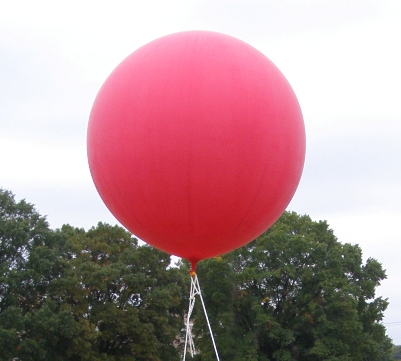 Last week the Defense Advanced Research Projects Agency (DARPA), the folks responsible for bringing us the Internet, sponsored a contest that may result in some interesting data about how we use social media to gather and disseminate information. The goal of the contest was to provide the location (longitude and latitude) of 10 red, eight-foot-wide weather balloons that had been placed at various locations within the continental US. It took the team from MIT just 9 hours to win the contest, and the $40K prize, using a diverse strategy combining social media collaboration with reward programs. But some of the teams also took a walk on the dark side when they employed deception intended to sidetrack competing teams.
Last week the Defense Advanced Research Projects Agency (DARPA), the folks responsible for bringing us the Internet, sponsored a contest that may result in some interesting data about how we use social media to gather and disseminate information. The goal of the contest was to provide the location (longitude and latitude) of 10 red, eight-foot-wide weather balloons that had been placed at various locations within the continental US. It took the team from MIT just 9 hours to win the contest, and the $40K prize, using a diverse strategy combining social media collaboration with reward programs. But some of the teams also took a walk on the dark side when they employed deception intended to sidetrack competing teams.
So, what does this have to do with media and journalism? Think of every breaking news story as a contest. The first journalistic team to crack the story and file the report is rewarded with ratings/readership/reputation, etc., all of which translates into monetary rewards for the winning team. How does NBC, CNN, the BBC, or People Magazine “scoop” the competition when they’re working a breaking story? They may try to buy an “exclusive” interview with a key player. When President Kennedy was assassinated in Dallas, TX, Dan Rather, a reporter for CBS, became aware of Zapruder’s 8mm film of the assassination. He asked for permission from the top CBS brass to buy the film for $10,ooo, but that turned out to be too little, too late. Zapruder had already sold the film and rights to Life magazine for $150,000! And if you think that’s a lot of money, the 6-foot long strip of celluloid with 494 frames, lasting 26 seconds, was later purchased by the US government for $16 million!
Today, news organizations may use social media networking to mobilize reporters and stringers who work for the news organization and perhaps even try to recruit “citizen journalists” who may have inside information. Twitter and other social media tools can be used to disseminate information and to recruit collaborators.
The DARPA contest may actually provide some insight into the process of collaboration and even intentional deception using social media. Hopefully the news media are above floating fake balloons to try to fool the competition. But sadly, whenever money is at stake there are people willing to bend the rules.
Read more, or listen to the story, at the NPR website.
